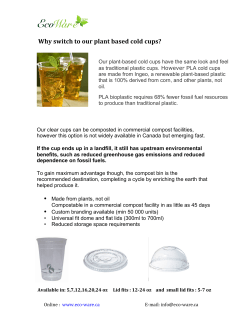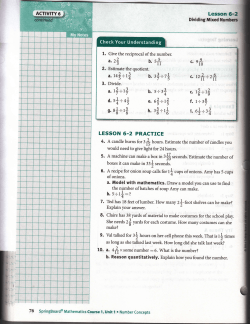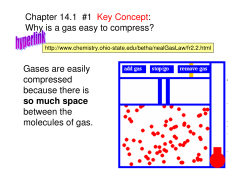
Lesson 2: Predicting how many cups? - laura curcio`s e
Lesson 2: Predicting how many cups? AusVELS (Week 9, Wed 3/11) Measure and compare the lengths and capacities of pairs of objects using uniform informal units (ACMMG019) Tuning in/ Tool Time (10 mins) Quick online capacity quiz (Interactive on IWB) http://arithmeticforkids.com/members/Quizzes/Measurement/Capacity%20hold%20more%20or%20less/measurements.html Learning Intention and Success Criteria We are learning to measure the capacities of objects Resources Student Grouping Whole Class (15 mins) Group Work (25 mins) I can make predictions about how much an object can hold I can measure the capacity of an object Revise definition of Capacity and go through LI and SC -Key words: “capacity”, “predictions” As a class make prediction of how many cups of water it might take to fill a container (only use one size container for purpose of this lesson) and record prediction on board Model filling cups into container, ensuring you are modelling filling water up to the top Think out loud, make some mistakes (e.g. only fill up half a cup instead of full) Call students to come up and have a go filling up with water Record actual measurement and write on board. Compare with initial prediction Model follow up activity using chart using example from above activity. In groups, students will use different objects (e.g. unit cubes, sand, water, rice etc- we will have these objects prepared in stations) to fill a container/jug (only use one size container for this lesson) using cups to measure Children make predictions about how much they think will fit in the container and record in the “How Many Cups (prediction) column”, they then physically try it, and record in the “How Many Cups (actual)” on their capacity prediction charts Share Time (5 mins) Assessment Online quiz for tool time http://arithmeticforkids.com/members/Quizzes/Measurement/Capacity%20hold%20more%20or%20less/measurements.html Capacity Prediction Center Booklet Container Objects to fill e.g. water, sand, cubes etc Cups to fill container Mixed ability “What is one new thing you learnt today in maths?” or “What good maths strategies did you use today?” Anecdotal notes from children’s responses in share time (documented in a table) Observation/Constant roving/Taking photographs of students’ work Lesson Evaluation Pupil Achievement: Demonstration/modelling was engaging as it actively involved students, they were excited to participate in their own measuring experiments Students understood the importance of filling cups right to the top to provide accuracy when measuring All students worked collaboratively and cooperatively within groups, equal participation Teacher Effectiveness: Good duration for ‘whole class’ and ‘tuning in’, much better time management Modelling follow up activity was vital to scaffold learning Next time: put students in groups first, logistics of grouping/setting to work stations wasted a bit of time
© Copyright 2025









